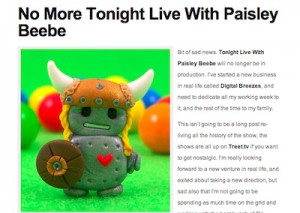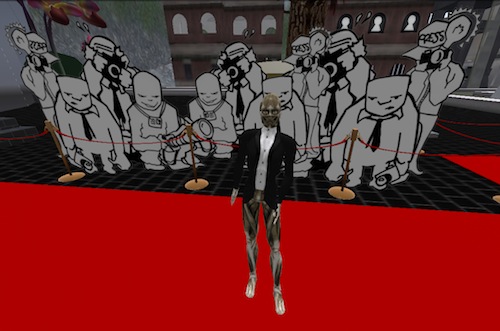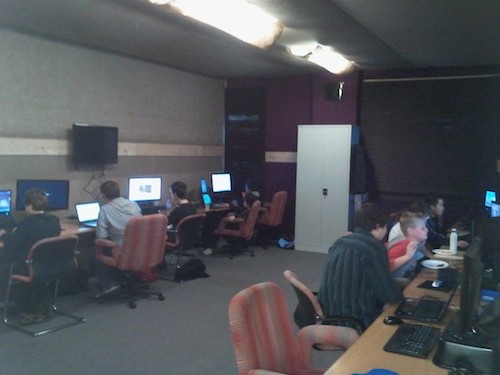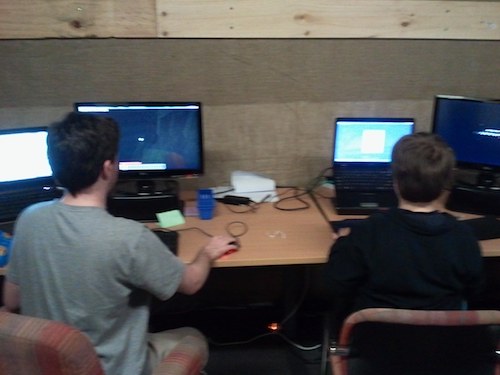 As a gamer of 30 years standing, I still manage to get very excited by an upcoming game release. If that game is related to an iconic childhood brand like Star Wars, then that excitement grows even more. That’s why, for the past couple of years I’ve been running a website devoted to covering the upcoming Star Wars MMO, Star Wars: The Old Republic(SWTOR) . For those unaware, game developer Bioware has licensed the LucasArts behemoth in what is one of the largest game development tasks ever undertaken: the voice scripts alone run to over 40 novels in length
As a gamer of 30 years standing, I still manage to get very excited by an upcoming game release. If that game is related to an iconic childhood brand like Star Wars, then that excitement grows even more. That’s why, for the past couple of years I’ve been running a website devoted to covering the upcoming Star Wars MMO, Star Wars: The Old Republic(SWTOR) . For those unaware, game developer Bioware has licensed the LucasArts behemoth in what is one of the largest game development tasks ever undertaken: the voice scripts alone run to over 40 novels in length
The stakes are very high overall: Star Wars fans are a picky lot and demand a product faithful to the lore of the Star Wars universe. The hardcore Star Wars fan is another beast altogether. They create fan fiction, read all the books and comics, and have played most if not all of the games that have gone before. I should know, as I interact with them on a daily basis – I’m more of a casual fan who loves the movies and has played Lego Star Wars.
The challenge of course with any MMO is creating a great product that builds a big enough base of players to make it viable. World of Warcraft is the leader in the space, with most others in a distant catch-up game as far as subscriber numbers. SWTOR is well-placed to make a big splash in that regard. The story is there, the history is there and there’s no shortage of MMO players looking for a new thing. The power of the franchise is also likely to be strong enough to attract a new audience to MMO gaming.
SWTOR has been in active development for well over three years, and one of the biggest obsessions of those following the game is when it will be released. Bioware are stating a 2011 release is still on the cards and the game demonstrations to date show a game that’s looking pretty polished. The hard part observing from the outside is determining whether those snippets of game demonstration indicate a game close to completion. This is where the passion issue comes into it. The fans of the game are desperate to get their hands on SWTOR and the lack of a firm release date drives some of those fans to distraction. SWTOR’s official forums are riddled with speculation on release date and that’s likely to intensify with each week that passes. Others tend to caution against a rushed release, happy to wait a little longer to increase the chances of a great game.
For Australian fans there’s another source of friction: rumours of a delayed release for our region. ABC TV Australia’s Good Game set off that little firestorm with some tweets from the E3 games expo in the United States. It was backed up by a Fairfax gaming journalist http://www.theage.com.au/digital-life/games/blogs/screenplay/e3-diary-day-4-20110613-1fzn6.html – in both cases it appears the information came from a PR person at Bioware’s parent company Electronic Arts and in both instances the information was far from definitive.
I’m here to tell you that those mentions have set off one hell of a reaction amongst what we call the Oceanic community of SWTOR fans. Bioware have refused to comment on rumours (and I bet they get a lot of them) and because the story broke over a weekend there’s not been a lot of response at all. You can imagine how that has gone down with some fans. I’ve seen forum posts arguing for picket lines at the Electronic Arts offices in Brisbane to coincide with an upcoming games expo. Petitions have been created, phone campaigns are being discussed (again to Electronic Arts offices in Australia) and there’s generally a lot of agitation. All of the angst is over some unverified information from a PR person. For what it’s worth, I’ve done some research and spoken off the record to some other journalists who attended E3: the information appears not to be set in stone but there’s certainly some active consideration occurring of a staggered launch. The SWTOR FAQ addresses the issue by stating that:
Star Wars: The Old Republic will be released simultaneously in various countries of the world and the service will be localized in several languages. More details on this will be released at a later date.
Some are taking that as confirmation of a worldwide simultaneous release – others like me aren’t so sure.
The issue places Bioware in an interesting conundrum. If a delayed release in Australia is intended, then their management of the issue has been shown wanting – or at least their parent company’s PR people have let them down. If a simultaneous worldwide release is still the plan, then they have some work to do in getting the PR messages right with their parent company. Either way – it’s just another example of the passion of the fans of a game and the pressure that places on a developer to deliver the goods. Nothing gets people riled up more than perceived discrimination and if a staggered release does occur, it’s easy to argue that that’s exactly what it is: favouring the larger markets.
That said, I’ll stake my collection of Star Wars figurines on the fact that even if a local delay does eventuate, most people will still sign-up and use workarounds to be up and running as soon as possible. That’s what passionate fans do. I’ll still be on the picket line with all the hardcore fans though.
(This is a slightly altered piece that was written for ABC Technology)














Recent Comments